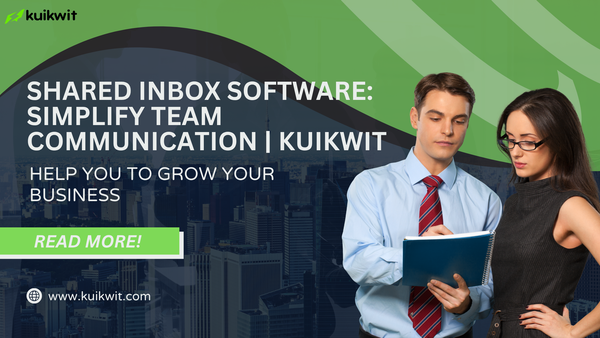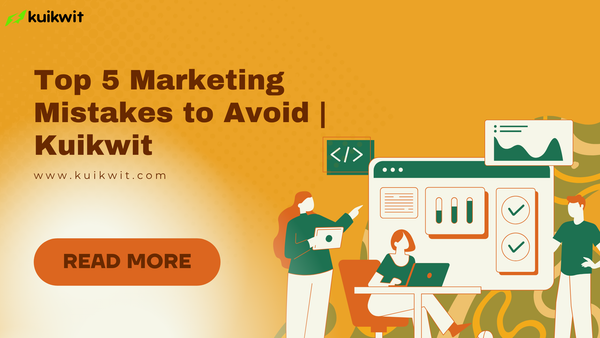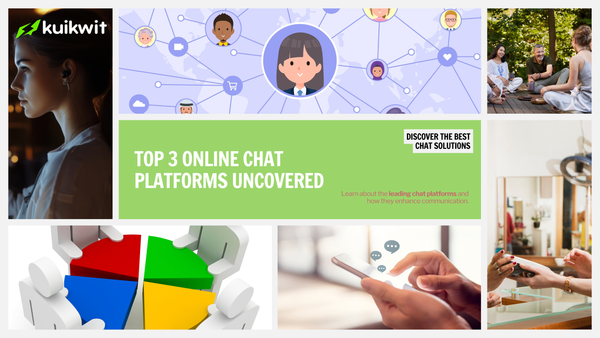Customer Retention vs Acquisition: Why Retention Costs Less
Discover why customer retention is cheaper than acquisition. Learn key stats, real business examples, and how fast responses with tools like Kuikwit boost loyalty and profits.

Sarah runs a small online tea shop. In her first year, she poured money into Facebook ads, influencer posts, and promotions to get new customers. Then in year two, she noticed something: many of the new buyers came once, then never returned. Meanwhile, the customers who had bought before were coming back for more tea, trusting her brand, recommending her blends to friends.
Around the same time, a large e-commerce business she admired stopped aggressive ad spend and instead invested in making its existing customers happier faster replies, personalized offers, loyalty rewards. Their profits increased, and ad costs dropped.
That’s the contrast of customer retention vs acquisition in action. One is expensive, one builds long-term value. Both are necessary, but the numbers and the experience show that focusing on keeping customers (retention) often costs far less and delivers more sustainable growth than constantly chasing new ones (acquisition).
What Does “Customer Retention vs Acquisition” Mean?
- Customer Acquisition is all about finding new customers: ads, promotions, lead generation, new market entry.
- Customer Retention means keeping your current customers happy: great service, loyalty programs, prompt support, repeat purchases.
Both are parts of growth strategy. But in comparing costs, effort, and return, many businesses discover retention gives more bang for the buck.
Key Stats: How Much Cheaper Is Retention?
Some of the most powerful data in marketing shows:
1. Cost difference: Acquiring a new customer can cost 5 to 25 times more than retaining an existing one. Harvard Business Review+3Invesp+3Business Dasher+3
2. Profit boost with retention: Increasing customer retention by just 5% can raise profits by 25% to 95%. OutboundEngine+2rivo.io+2
3. Higher conversion from current customers: The success rate of selling to someone who already bought from you is about 60-70%, while selling to a new prospect usually yields only a 5-20% conversion rate. OutboundEngine+2LoyaltyLion+2
4. Existing customers spend more: Existing customers are more likely to try new products and spend more over time than brand new ones. Business Dasher+2rivo.io+2
These stats apply to both small businesses (where margins are tighter) and large businesses (where scale magnifies costs and returns).
Why Retention Costs Less: The Logic
Here’s why retaining customers costs less than getting new ones:
- Lower marketing & acquisition costs: You don’t need large ad campaigns or expensive promotions to reach people who already know you. You already have their contact info, history, and trust.
- Higher lifetime value (CLV): Repeat purchases, cross-sales, and upselling add up. A loyal customer tends to spend more over time.
- Reduced friction in sales: Existing customers know your brand; they need less convincing. Less discounting, less persuasion, fewer resources per sale.
- Word-of-mouth & referrals: Happy customers tell others. You gain new customers via trust, at a fraction of the cost.
- Operational efficiency: With retention, customer support, messaging, and service can be optimized. Less chaos. Fewer wasted messages, fewer “Where is my order?” questions.
How Fast Responses and Good Communication Tie Into It
Here’s where Kuikwit (your all-in-one messaging hub) fits in perfectly into the retention vs acquisition story:
- Faster response times mean customers feel heard and valued. That builds trust and loyalty.
- When all messages (social media, email, chat) are in one place, your team doesn’t drop messages. Existing customers feel consistent support.
- Personalization and timely follow-ups become easier. You can see past orders, preferences, and tailor messages to delight your customer boosting retention.
Good, fast, and consistent communication is a retention engine.
How Both Small and Large Businesses Can Benefit
|
Business Size |
Impact of Messaging Mistakes |
Advantage When Fixed |
|
Small Businesses |
Limited staff; mistakes are more noticeable. Missed
messages or tone issues can mean losing a customer permanently. |
Build a strong reputation, increase referrals, keep
customer-lifetime value. |
|
Large Businesses |
Huge volume of messages. Mistakes scale up: delays, lost
leads, inconsistent brand image. |
Greater efficiency, stronger trust across many customers,
reduced customer churn. |
Best Practices to Prioritize Retention
Here are practical steps to lean more into retention without neglecting acquisition:
1. Measure both CAC and CLV: Customer Acquisition Cost vs Customer Lifetime Value. Know what you spend to acquire and what you earn over time.
2. Reduce response time: With tools like Kuikwit, unify messaging channels so replies are fast. Quicker replies build trust.
3. Personalize experiences: Use purchase history, preferences. Send “thank you” messages, birthday discounts, loyalty rewards.
4. Loyalty & reward programs: Simple incentives to keep customers coming back.
5. Feedback loops: Ask customers what they like or dislike. Act on the feedback.
6. Quality customer support: Resolving issues well often matters more than flashy ads.
7. Use retention-oriented marketing content: Email marketing, helpful guides, tips for existing customers.
Comparing Retention vs Acquisition: Where to Spend
When you budget, ask:
- If you spend $1 to acquire, what will it cost to retain that same customer for a year?
- Which yields more revenue long term: a new customer or repeat buyer?
- How many customers leave because of poor communication or slow response?
Often, shifting resources from pure acquisition to improving retention (support, communication, loyalty) yields higher returns.
Real-World Example
Imagine a large e-comm business that spends heavily on ads to get new customers. They notice churn (repeat rate) is low many customers never come back. After switching strategy: improving messaging speed, using one hub like Kuikwit to centralize customer communication, adding loyalty perks, the repeat purchase rate climbs by 20%. Their ad spend doesn’t grow, but revenue from existing customers rises sharply. Margin improves, customer acquisition cost effectiveness increases, and the business becomes more sustainable.
Challenges & When Acquisition Still Matters
Retention isn’t everything. There are times acquisition matters:
- Launching a new product or entering a new market.
- Growing your audience so that retention has enough volume to matter.
- If your product is a one-time purchase, you may rely more on acquisition.
But even in those cases, a balanced approach (acquire + retain) generally works best.
Call to Action
Whether you run a small shop or helm a large enterprise, understanding customer retention vs acquisition isn’t just academic it’s vital.
If you want to spend less and get more long-term value, start focusing on keeping the customers you have.
Let Kuikwit (your all-in-one messaging hub) help you do that: fast, seamless communication, no missed messages, and happier repeat customers.
Conclusion
In the battle of customer retention vs acquisition, retention wins when it comes to cost, trust, and long-term growth. Acquiring new customers is important but doing it at the expense of keeping old ones will cost you more in the long run. With tools, practices, and culture that emphasize retention especially speedy communication via a unified messaging hub like Kuikwit you build a business that’s resilient, trusted, and profitable.
Are you ready to invest more in keeping the customers you already have and see how much cheaper and more powerful that can be?




